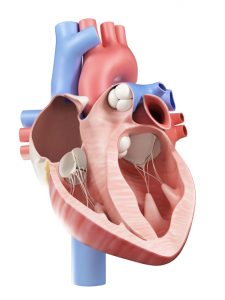
Background
The aortic valve controls blood flow between the left ventricle and the aorta, the large artery that delivers oxygen-rich blood to the body.
There are two main problems that can occur with the aortic valve: it can become hardened and narrowed (stenosis), or it can leak (regurgitation).
The most common problem in the elderly is called age-related calcific degeneration, where the gradual buildup of calcium causes the valve to narrow. In younger patients, a hereditary bicuspid valve (two leaflets instead of three) is a common cause. Other causes can include rheumatic heart disease or infection (endocarditis). Symptoms of aortic valve disease may include light-headedness, chest pain, shortness of breath and fatigue.
About the surgery
Aortic valve replacement (AVR) is the most effective method of treating severe disease of the aortic valve in most patient. It involves removing the diseased valve and replacing it with an artificial valve, as discussed on our page “Which valve is right for me?“.

